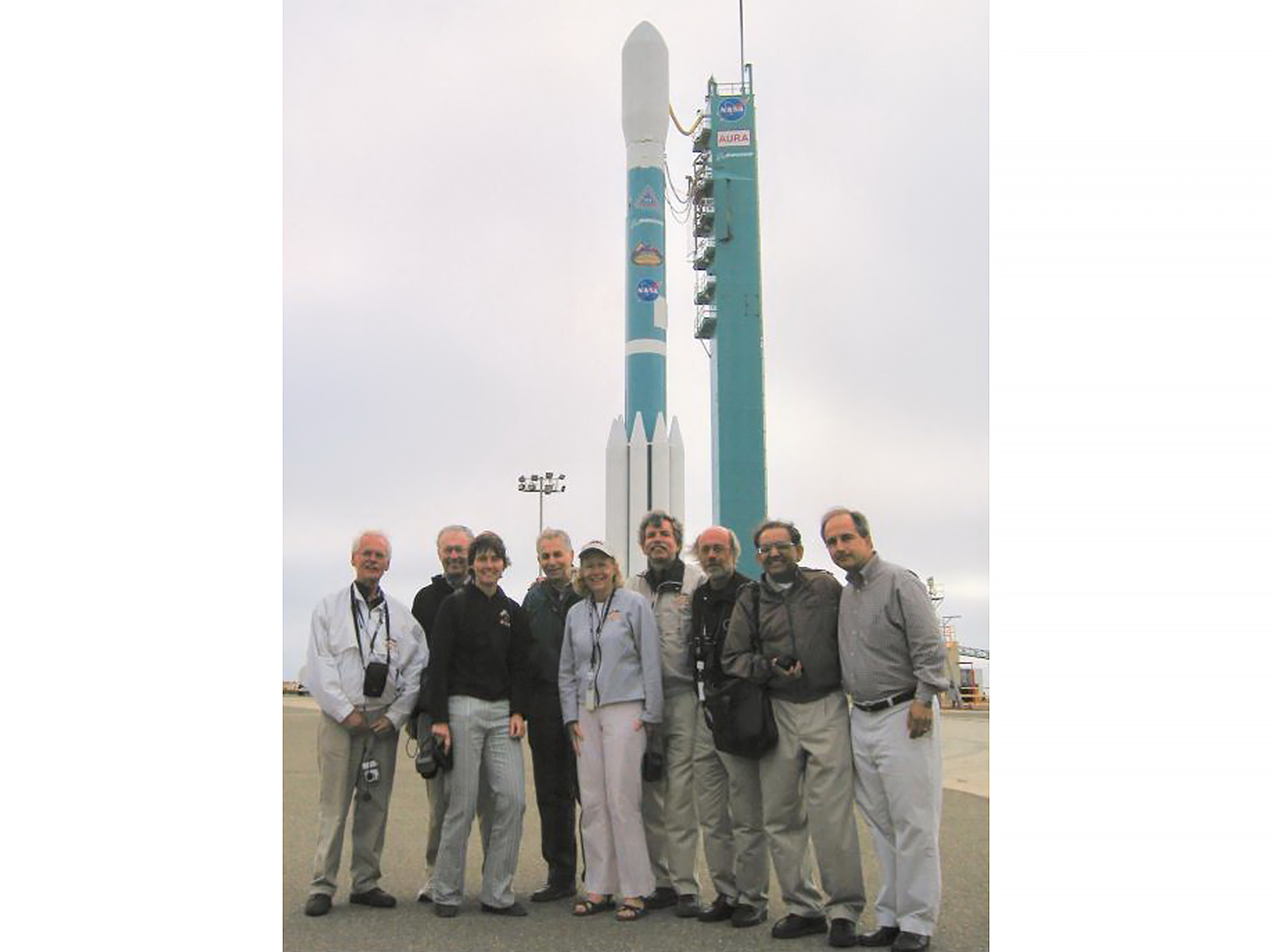Expanded coverage of topics from “The Editor’s Corner” in The Earth Observer
The last of NASA’s three EOS Flagships – Aura – marked 20 years in orbit on July 15, 2024, with a celebration on September 18, 2024, at the Goddard Space Flight Center’s (GSFC) Recreational Center. The 120 attendees – including about 40 virtually – reminisced about Aura’s (originally named EOS-CHEM) tumultuous beginning, from the instrument and Principal Investigator (PI) selections up until the delayed launch at the Vandenberg Space Force Base (then Vandenberg Air Force Base) in California. They remembered how Bill Townsend, who was Deputy Director of GSFC at the time, and Ghassem Asrar, who was NASA’s Associate Administrator for Earth Science, spent many hours on site negotiating with the Vandenberg and Boeing launch teams in preparation for launch (after several delays and aborts). Aura mission program scientist, project scientists (PS), and several instrument PI posed shortly before launch— see Photo.

At the anniversary event, Bryan Duncan [GSFC—Aura Project Scientist] gave formal opening remarks. Aura’s datasets have given a generation of scientists the most comprehensive global view of gases in Earth’s atmosphere to better understand the chemical and dynamic processes that shape their concentrations. Aura’s objective was to gather data to monitor Earth’s ozone layer, examine trends in global air pollutants, and measure the concentration of atmospheric constituents contributing to climate forcing. To read more about Aura’s incredible 20 years of accomplished air quality and climate science, see the anniversary article “Aura at 20 Years” in The Earth Observer.
Bill Guit [GSFC—Aqua and Aura Program Manager and former Aura Mission Operations Lead] gave brief remarks focusing on how Aura became part of the international Afternoon Constellation, or “A-Train,” of satellites, which includes Aqua that launched in 2002, and joined by several other NASA and international missions. Aura and Aqua have provided data for over two decades of multidisciplinary Earth science discovery and enhancement.
Both current and former Aura instrument PIs gave brief remarks. Each discussed Aura’s scientific legacy and their instrument’s contributions. They thanked their engineering teams for the successful development and operation of their instruments, and the members of the instrument science teams for developing the algorithms, discovering new science, and demonstrating how the science will serve the public. The PIs were particularly grateful that their instruments or the variants thereof will continue to fly on current and/or future NASA science missions or on international operational satellites.
Steve Platnick
EOS Senior Project Scientist

























